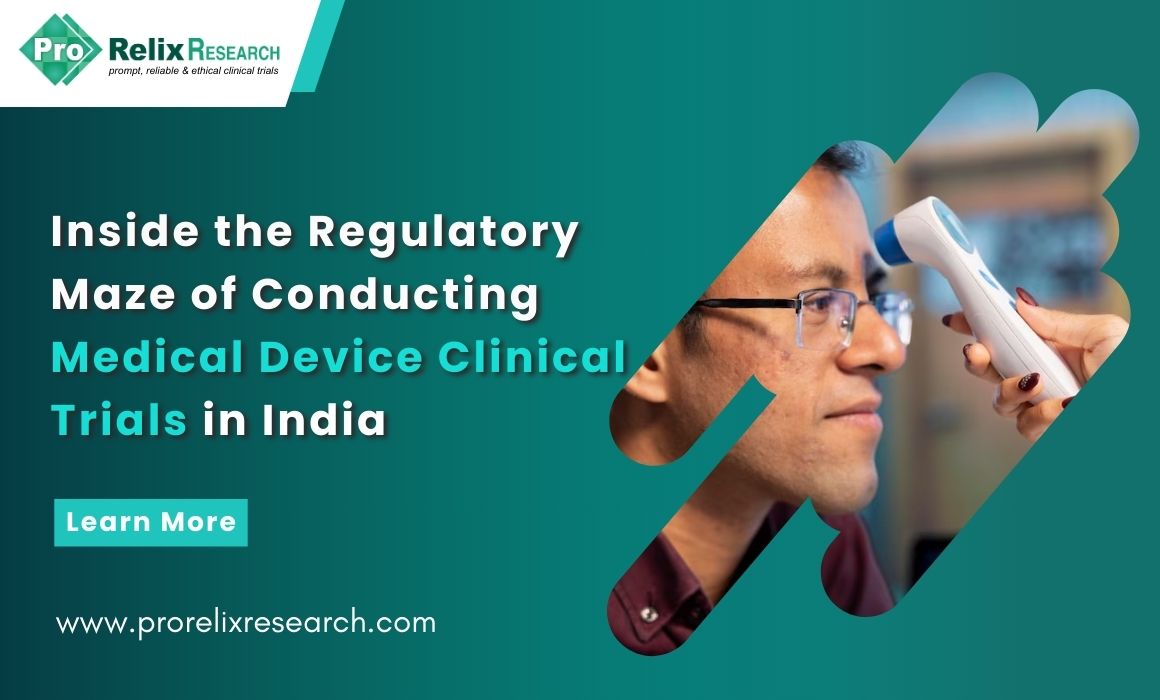The evolution of India’s healthcare and med-tech sectors has ushered in an era of remarkable innovation. Yet, amidst the promise of progress lies a formidable labyrinth—the regulatory framework governing Medical Device Clinical Trials in India. For global and domestic manufacturers alike, understanding this regulatory environment is not just a legal necessity; it is a strategic imperative.
As India positions itself as a clinical research powerhouse, the country’s stringent yet evolving regulatory architecture demands acute diligence, ethical integrity, and procedural excellence from all stakeholders engaged in the clinical development of medical devices.
The Strategic Relevance of India in Global Device Research
India offers a unique convergence of clinical diversity, cost-effectiveness, and skilled talent, making it an increasingly attractive destination for Medical Device Clinical Trials. The sheer heterogeneity of the patient population provides invaluable data for efficacy and safety profiling, particularly for devices intended for global deployment.
However, the journey from concept to clinical application in India is governed by a regulatory pathway that is distinct in its structure and expectations.
For organizations aiming to overcome regulatory challenges in Indian medical device trials, partnering with an experienced CRO to ensures expert navigation through complex requirements.
The Framework: Decoding Regulatory Oversight
At the heart of India’s medical device governance is the Central Drugs Standard Control Organization (CDSCO), under the Ministry of Health and Family Welfare. With the implementation of the Medical Device Rules (MDR), 2017, and its subsequent amendments, India now operates under a risk-based regulatory model aligned with global best practices.
Understanding the nuances of India’s regulatory framework for device trials is crucial for timely and compliant market entry. CDSCO plays a pivotal role, and aligning your study protocols with its expectations significantly enhances approval prospects.
A Detailed Look at the Clinical Trial Approval Journey
1. Regulatory Determination and Strategic Planning
The first step is the precise classification of the device. Incorrect classification can delay or derail the process, so seeking regulatory consultation or expert guidance at this stage is strongly recommended.
For those seeking to navigate India’s clinical trial regulations for devices, aligning with a CRO like ProRelix Research brings unmatched insight and strategic clarity.
2. Submission of Clinical Investigation Application (Form MD-22)
A comprehensive dossier must be prepared and submitted to CDSCO, including:
- Clinical investigation protocol
- Investigator’s brochure
- Preclinical data or prior human experience (if any)
- Details of manufacturing and design controls
- Ethics Committee approvals
- Informed consent documents
- Safety and risk management documentation
Upon satisfactory review, permission is granted via Form MD-23. This process is one of the key steps when going step-by-step through India’s device trial approvals.
3. Ethical Oversight and Institutional Review
No clinical study may commence without approval from a registered Ethics Committee (EC). Moreover, the EC must oversee the trial’s ethical conduct, including patient rights, data protection, and risk mitigation.
Understanding and implementing medical device trial compliance in India requires strong ethical foundations and rigorous adherence to evolving standards.
4. Trial Execution and Good Clinical Practice (GCP)
The conduct of the clinical trial must conform to ISO 14155 and Indian GCP guidelines. Sponsor responsibilities include regular monitoring, adverse event reporting, and ensuring data integrity.
Challenges: Navigating a Complex Ecosystem
Despite the regulatory maturity, several pain points persist:
- Ambiguity in interpretation of certain device classifications or “substantial equivalence” with existing products.
- Variable EC competence, especially in Tier 2 or Tier 3 cities.
- Delays in regulatory timelines, particularly for complex Class D devices.
- Fragmented clinical infrastructure that may not always be device-trial ready.
These are among the key hurdles in Indian medical device clinical research that companies must anticipate and plan for strategically.
Strategies for Success: Charting a Course Through the Maze
Start with Regulatory Intelligence: Deep-dive into the regulatory positioning of your device in the Indian context.
Invest in Pre-Submission Engagement: Proactively engage with CDSCO to seek clarification or informal scientific advice.
Build a Strong Compliance Culture: Ensure all stakeholders—from investigators to trial sites—are trained on device-specific GCP requirements.
Leverage Technology: Use electronic trial management tools to streamline documentation, monitoring, and adverse event reporting.
Choose Strategic Sites: Prioritize clinical sites with prior experience in device trials and robust infrastructure.
Successfully conducting compliant clinical trials for devices in India requires a multi-dimensional strategy combining regulatory, ethical, and operational excellence—areas where ProRelix Research provides proven expertise.
Conclusion: From Complexity to Competitive Advantage
The path to conducting Medical Device Clinical Trials in India is intricate—but not impenetrable. With meticulous preparation, ethical vigilance, and regulatory expertise, sponsors and Clinical Research Organizations (CROs) can transform the complexity of India’s clinical landscape into a competitive advantage. The regulatory framework, though stringent, is designed to safeguard patient safety and uphold scientific integrity—principles that ultimately align with the broader mission of healthcare innovation.
For those committed to understanding CDSCO guidelines for device trials and navigating regulations affecting medical device studies in India, collaboration with trusted partners is non-negotiable.
Inside India’s clinical trial process for medical devices, success is not about shortcuts—it’s about intelligent, compliant, and patient-centric execution.





